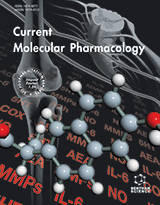Abstract
Voltage-gated Na and Ca2+ channels represent two major ion channel families that enable myriad biological functions including the generation of action potentials and the coupling of electrical and chemical signaling in cells. Calmodulin regulation (calmodulation) of these ion channels comprises a vital feedback mechanism with distinct physiological implications. Though long-sought, a shared understanding of the channel families remained elusive for two decades as the functional manifestations and the structural underpinnings of this modulation often appeared to diverge. Here, we review recent advancements in the understanding of calmodulation of Ca2+ and Na channels that suggest a remarkable similarity in their regulatory scheme. This interrelation between the two channel families now paves the way towards a unified mechanistic framework to understand vital calmodulin-dependent feedback and offers shared principles to approach related channelopathic diseases. An exciting era of synergistic study now looms.
Keywords: Sodium channels, calcium channels, calmodulation.
Graphical Abstract
Current Molecular Pharmacology
Title:Towards a Unified Theory of Calmodulin Regulation (Calmodulation) of Voltage-Gated Calcium and Sodium Channels
Volume: 8
Author(s): Shin Rong Lee, David T. Yue, Daniel N. Yue, Rosy Joshi-Mukherjee, Paul J. Adams, Hojjat Bazzazi, Philemon S. Yang, Manning Zhang, Jiangyu Li, Ho Namkung, Manu Ben-Johny, John B. Issa, Jennifer S. Babich, Wanjun Yang, Rahul Banerjee, Jacqueline Niu, Po Wei Kang, Worawan B. Limpitikul, Lingjie Sang and Ivy E. Dick
Affiliation:
Keywords: Sodium channels, calcium channels, calmodulation.
Abstract: Voltage-gated Na and Ca2+ channels represent two major ion channel families that enable myriad biological functions including the generation of action potentials and the coupling of electrical and chemical signaling in cells. Calmodulin regulation (calmodulation) of these ion channels comprises a vital feedback mechanism with distinct physiological implications. Though long-sought, a shared understanding of the channel families remained elusive for two decades as the functional manifestations and the structural underpinnings of this modulation often appeared to diverge. Here, we review recent advancements in the understanding of calmodulation of Ca2+ and Na channels that suggest a remarkable similarity in their regulatory scheme. This interrelation between the two channel families now paves the way towards a unified mechanistic framework to understand vital calmodulin-dependent feedback and offers shared principles to approach related channelopathic diseases. An exciting era of synergistic study now looms.
Export Options
About this article
Cite this article as:
Rong Lee Shin, T. Yue David, N. Yue Daniel, Joshi-Mukherjee Rosy, J. Adams Paul, Bazzazi Hojjat, S. Yang Philemon, Zhang Manning, Li Jiangyu, Namkung Ho, Ben-Johny Manu, B. Issa John, S. Babich Jennifer, Yang Wanjun, Banerjee Rahul, Niu Jacqueline, Wei Kang Po, B. Limpitikul Worawan, Sang Lingjie and E. Dick Ivy, Towards a Unified Theory of Calmodulin Regulation (Calmodulation) of Voltage-Gated Calcium and Sodium Channels, Current Molecular Pharmacology 2015; 8 (2) . https://dx.doi.org/10.2174/1874467208666150507110359
| DOI https://dx.doi.org/10.2174/1874467208666150507110359 |
Print ISSN 1874-4672 |
| Publisher Name Bentham Science Publisher |
Online ISSN 1874-4702 |
 53
53 3
3 1
1 2
2
- Author Guidelines
- Bentham Author Support Services (BASS)
- Graphical Abstracts
- Fabricating and Stating False Information
- Research Misconduct
- Post Publication Discussions and Corrections
- Publishing Ethics and Rectitude
- Increase Visibility of Your Article
- Archiving Policies
- Peer Review Workflow
- Order Your Article Before Print
- Promote Your Article
- Manuscript Transfer Facility
- Editorial Policies
- Allegations from Whistleblowers
- Announcements
Related Articles
-
Cofactors and Metabolites as Protein Folding Helpers in Metabolic Diseases
Current Topics in Medicinal Chemistry Evaluating Drug Safety in Children and Adolescents with Bipolar Disorder
Current Drug Safety DREADD in Parvalbumin Interneurons of the Dentate Gyrus Modulates Anxiety, Social Interaction and Memory Extinction
Current Molecular Medicine Microenvironmental Determinants of Adult Neural Stem Cell Proliferation and Lineage Commitment in the Healthy and Injured Central Nervous System
Current Stem Cell Research & Therapy A Longitudinal FDG-PET Study of Transgenic Mice Overexpressing GSK- 3β in the Brain
Current Alzheimer Research Editorial: Antiepileptic Drugs in Neurosurgical Practic
Current Pharmaceutical Design Finding the Smoking Gun: Protein Tyrosine Phosphatases as Tools and Targets of Unicellular Microorganisms and Viruses
Current Medicinal Chemistry Serum Insulin Degrading Enzyme Level and Other Factors in Type 2 Diabetic Patients with Mild Cognitive Impairment
Current Alzheimer Research Phytochemicals as Prototypes for Pharmaceutical Leads Towards Drug Development Against Diabetic Cardiomyopathy
Current Pharmaceutical Design Patent Selections
Recent Patents on CNS Drug Discovery (Discontinued) Novel Therapeutic Strategies for Dementia
CNS & Neurological Disorders - Drug Targets Bioinformatic Screening of Autoimmune Disease Genes and Protein Structure Prediction with FAMS for Drug Discovery
Protein & Peptide Letters Psychiatric Disorders Associated with FXTAS
Current Psychiatry Reviews Pharmacogenetics of Drug Transporters and Its Impact on the Pharmacotherapy
Current Topics in Medicinal Chemistry P2X7 Receptor-Associated Programmed Cell Death in the Pathophysiology of Hemorrhagic Stroke
Current Neuropharmacology Multi-particulate Systems: Cutting-edge Technology for Controlled Drug Delivery
Recent Patents on Drug Delivery & Formulation Sodium-Assisted Formation of Binding and Traverse Conformations of the Substrate in a Neurotransmitter Sodium Symporter Model
Current Drug Discovery Technologies Scopolamine and Depression: A Role for Muscarinic Antagonism?
CNS & Neurological Disorders - Drug Targets Role of Physical Exercise as Complementary Treatment for Epilepsy and other Brain Disorders
Current Pharmaceutical Design Proteins Structures in Leishmania Amastigotes for Clinical Remission of Psoriasis
Current Proteomics


























